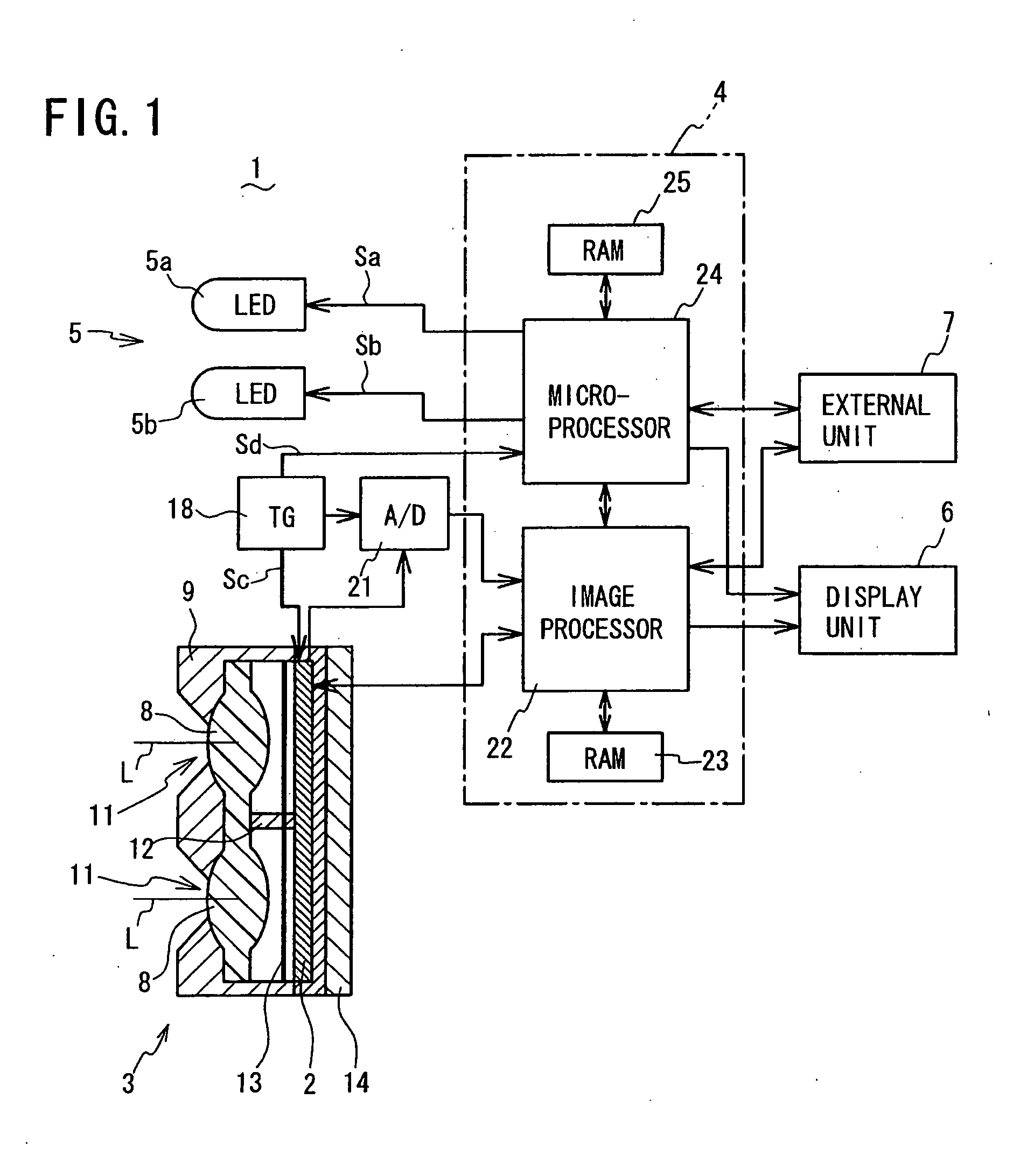Skin Area Detection Imaging Device
a detection imaging and skin area technology, applied in the field of skin area detection imaging devices, can solve the problems of difficult to obtain a high resolution (or outline shape) of the measured flesh take a long time for the conventional camera to detect the skin area of the object, etc., and achieve the effect of performing in a short tim
- Summary
- Abstract
- Description
- Claims
- Application Information
AI Technical Summary
Benefits of technology
Problems solved by technology
Method used
Image
Examples
first embodiment
[0031]Referring to FIG. 1 to FIG. 7, a skin area detection imaging device 1 according to a first embodiment of the present invention will be described. FIG. 1 is a schematic block diagram of the skin area detection imaging device 1, also showing a cross-sectional view of an optical lens system 3 contained therein, while FIG. 2 is a schematic front view of the optical lens system 3. FIG. 3 is a schematic front view of a solid-state imaging element 2 with control circuits in block form in the skin area detection imaging device 1. As shown in FIG. 1 to FIG. 3, the skin area detection imaging device 1 comprises an optical lens system 3 for collecting, at a focal point, light from an object to be imaged so as to form two upper and lower images (hereafter referred to as “unit images”) A and B on a solid-state imaging element (photodetector array) 2 placed at the focal point.
[0032]The skin area detection imaging device 1 further comprises: an electronic circuit 4 for electronically process...
second embodiment
[0043]Referring to FIG. 8 to FIG. 10, a skin area detection imaging device 1 according to a second embodiment of the present invention will be described. FIG. 8 is a schematic block diagram of the skin area detection imaging device 1 with bandpass filters 31a and 31b. The skin area detection imaging device 1 of the second embodiment is substantially the same as that of the first embodiment, except that the two LEDs 5a and 5b forming the flash light source 5 in the first embodiment are replaced here by one halogen lamp 5c (which thus also serves as a flash light source 5) to emit wide wavelength light containing the near-infrared range, and that the optical filter 13 in the first embodiment is replaced here by two bandpass filters 31a and 31b to selectively transmit light with two different wavelengths in the near-infrared range, respectively, for two light collection paths 30a and 30b formed by the two optical lenses 8, respectively. These differences between the first and second em...
PUM
 Login to View More
Login to View More Abstract
Description
Claims
Application Information
 Login to View More
Login to View More - R&D
- Intellectual Property
- Life Sciences
- Materials
- Tech Scout
- Unparalleled Data Quality
- Higher Quality Content
- 60% Fewer Hallucinations
Browse by: Latest US Patents, China's latest patents, Technical Efficacy Thesaurus, Application Domain, Technology Topic, Popular Technical Reports.
© 2025 PatSnap. All rights reserved.Legal|Privacy policy|Modern Slavery Act Transparency Statement|Sitemap|About US| Contact US: help@patsnap.com



